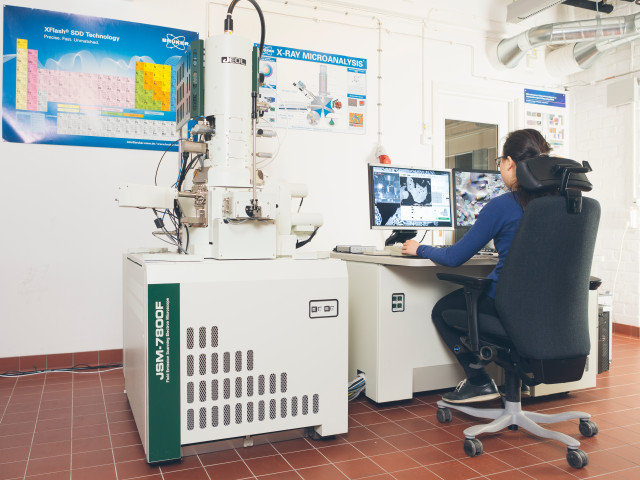Methods for powder synthesis. Properties and characterization of ceramic powders. Shape forming. Sintering and development of microstructure. Glass and glass ceramics. Crystal structure of ceramic materials; mechanical properties and fractography; statistical approach to fracture; theoretical strength; time-dependant failure; Thermal properties; Dielectric, piezoelectric, pyroelectric and ferroelectric ceramics; Magnetic ceramics; Semiconducting ceramics.
MH2037 Ceramics 6.0 credits

Content and learning outcomes
Course contents
Intended learning outcomes
The objective of this course is to provide the students with basic knowledge of the processing and design of advanced ceramic materials. The properties of these materials will be discussed together with how these properties arise and how they depend on electronic structure, crystal structure and microstructure. The course includes lectures, tutorials and project work.
After the course, the student should be abel to:
- discriminate between traditional and advanced ceramics.
- have a basic knowledge of technically important ceramic materials
- recognize and describe common ceramic crystal structures.
- use defect notation/thermodynamics to explain the point defect chemistry of ceramics, including the use of Brouwer (Kröger-Vink) diagrams.
- understand the basics of ceramic processing, including sintering theory and grain growth.
- understand the basics of the properties of advanced ceramic materials
- have some insight on how these properties arise and how they depend on electronic structure, crystal structure, microstructure, processing and design.
- solve numerical problems associated with mechanical properties (strength, toughness), including Weibull analysis.
- describe key electrical, magnetic and optical applications of ceramic materials.
Literature and preparations
Specific prerequisites
MH2026 Introduction to Materials and Process Design or similar, or
A BSc degree
Recommended prerequisites
Equipment
Literature
Utdelatd material.
Richerson: 1998,Third edition, Modern Ceramic Engineering Marcel Dekker Inc., New York
Examination and completion
If the course is discontinued, students may request to be examined during the following two academic years.
Grading scale
Examination
- TEN1 - Examination, 6.0 credits, grading scale: A, B, C, D, E, FX, F
Based on recommendation from KTH’s coordinator for disabilities, the examiner will decide how to adapt an examination for students with documented disability.
The examiner may apply another examination format when re-examining individual students.
Opportunity to complete the requirements via supplementary examination
Opportunity to raise an approved grade via renewed examination
Examiner
Ethical approach
- All members of a group are responsible for the group's work.
- In any assessment, every student shall honestly disclose any help received and sources used.
- In an oral assessment, every student shall be able to present and answer questions about the entire assignment and solution.